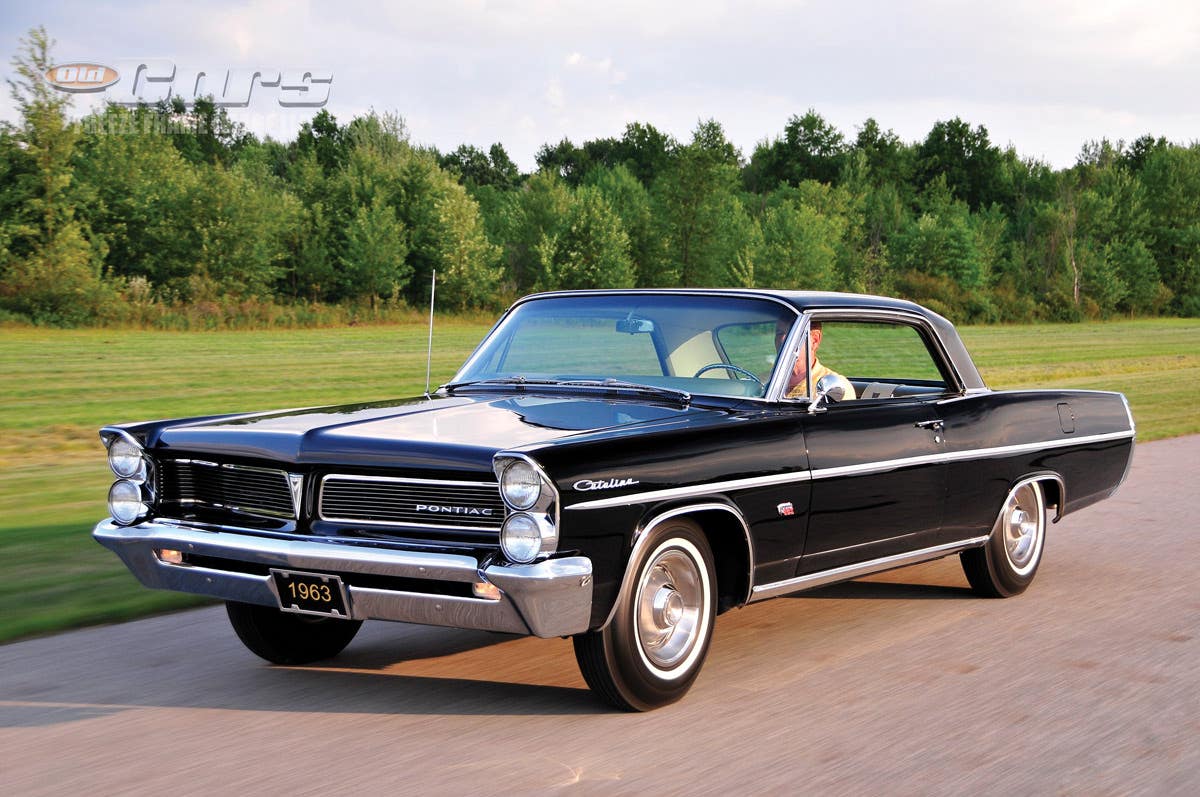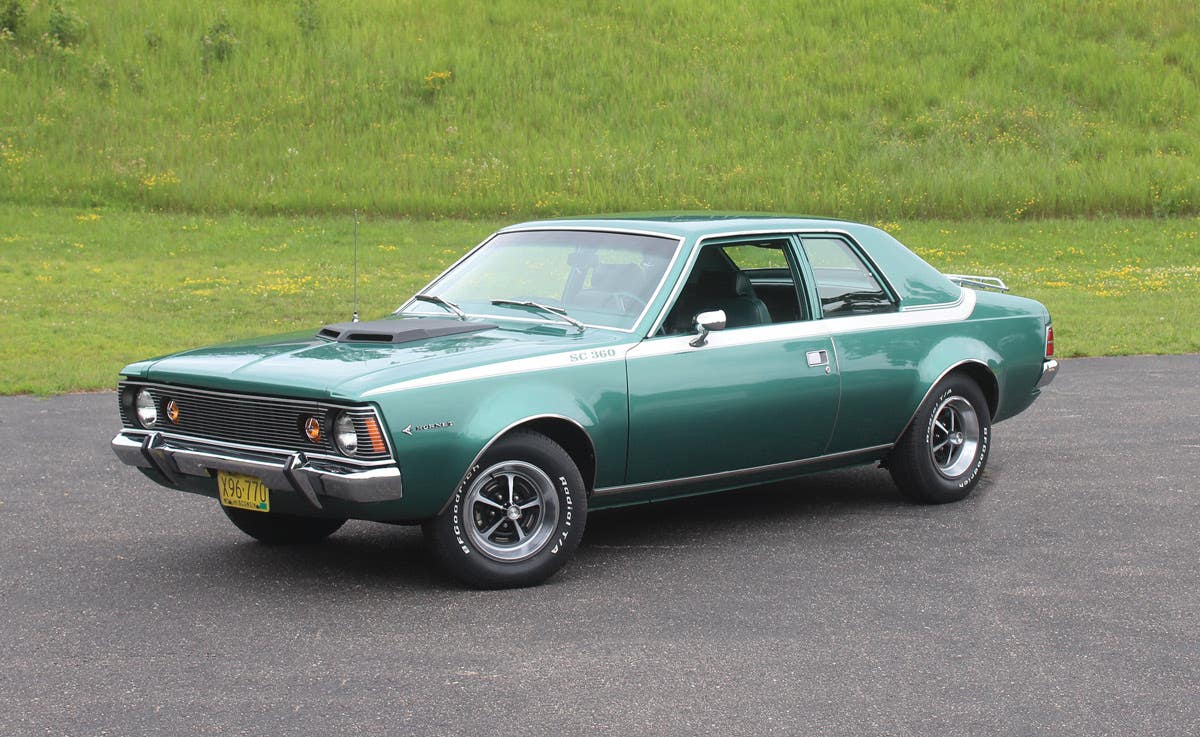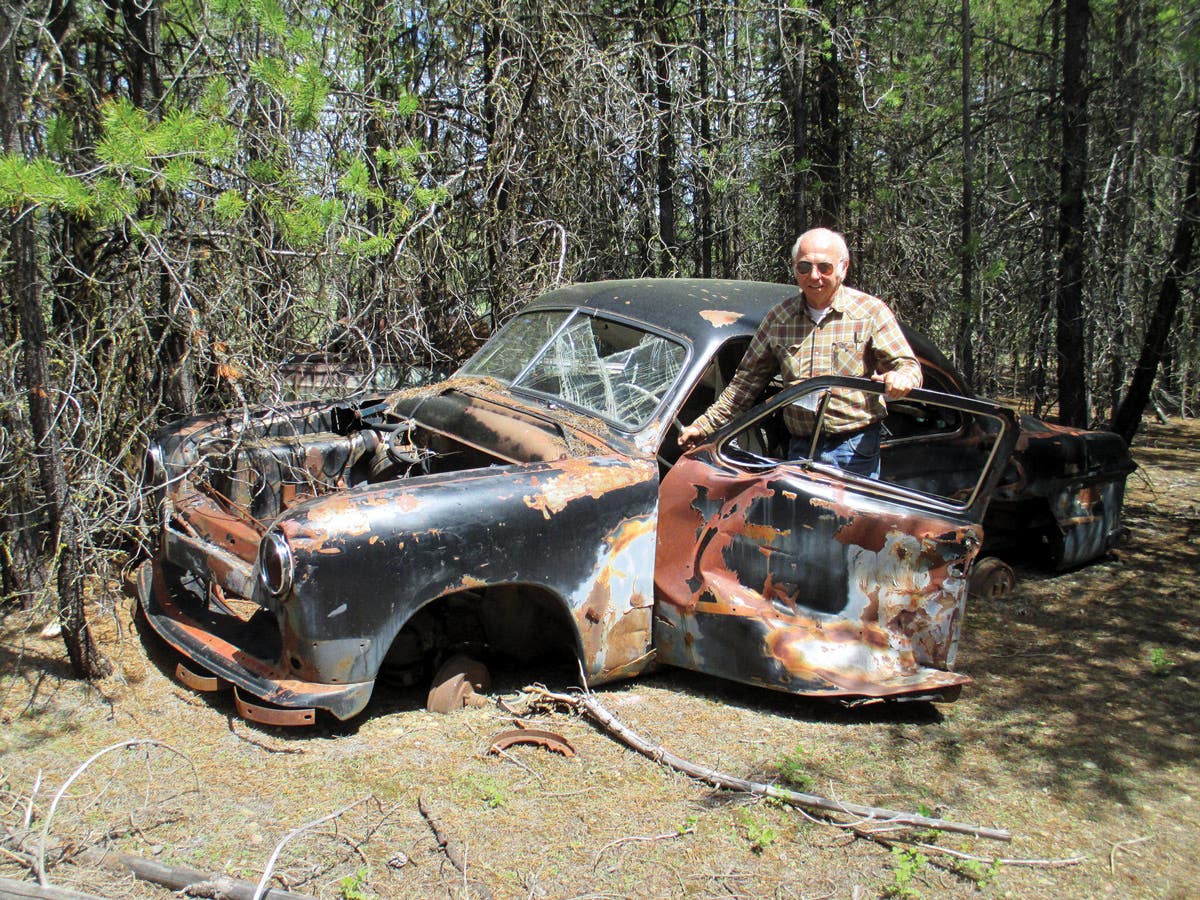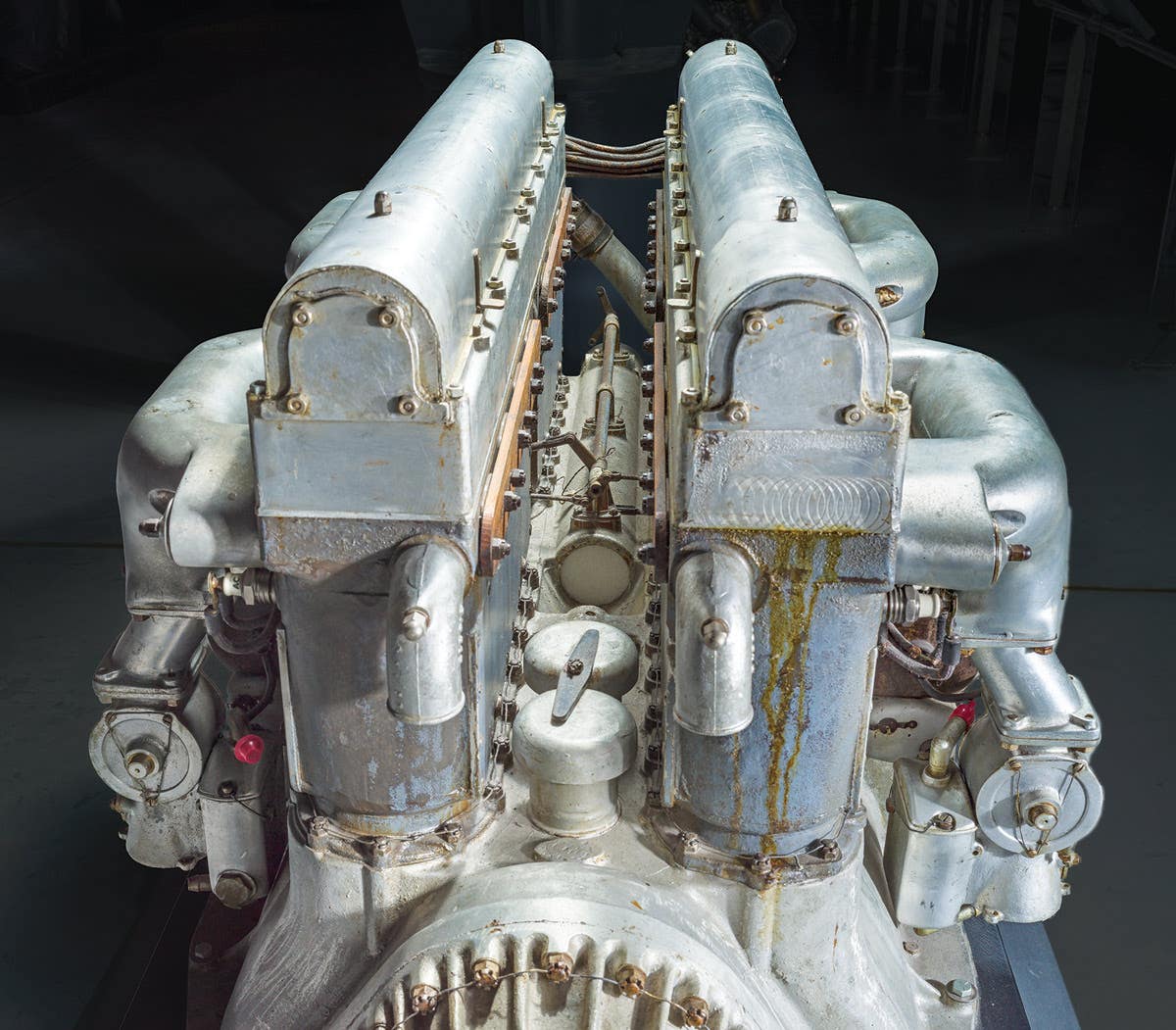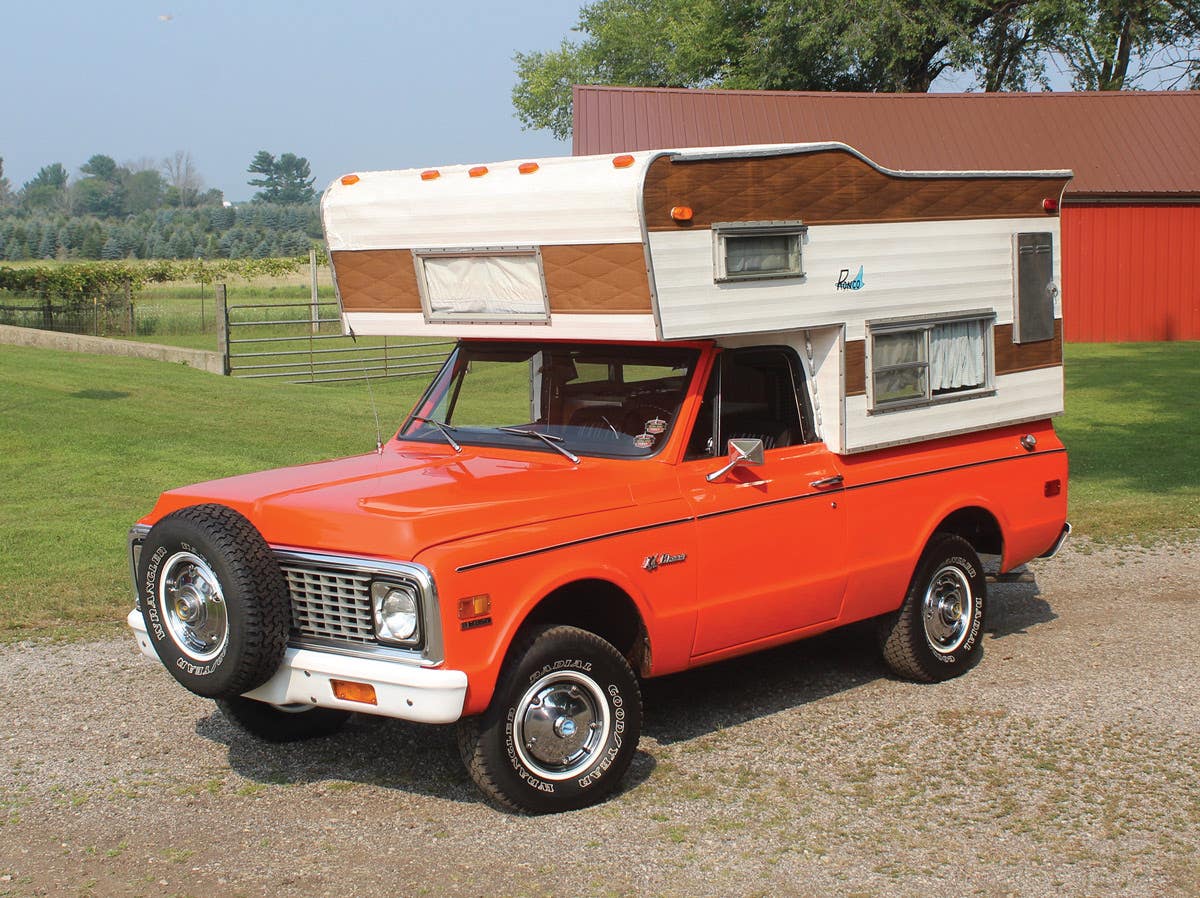The Antique Automobile Club of America’s (AACA) Eastern Fall Meet in Hershey, Pa., attracts some of the rarest, most unique and most under-appreciated automobiles in the hobby. Such was the case in 2023 when I was covering the event for Old Cars and made my initial walk of the show field in search of rare and unusual automobiles with special stories. Unlike most who attend the event, I start at the rear of the show, by the Historic Preservation of Original Features (HPOF) section, and make my way to the front where the Brass Era and driver-participation vehicles are parked. This allows me to miss the onslaught of people and automobiles making their way into the event.
About halfway through the show field, I approached the long and lithe automobiles from the early ’60s where a light-green 1961 Dodge Dart Pioneer caught my eye. As I made my way closer to get a better look, the “Pioneer” script on the passenger side quarter panel and two-door hardtop body style stopped me. I couldn’t recall if I had ever seen one of these cars in person, and the car’s quality drew me in. As I walked around it, the Dodge’s exceptional condition piqued my interest. I had to find out more about this Dart Pioneer model, its owner and its history.
From restoring Chevys to MoPars
I noticed three people standing near the Dodge and asked if the car belonged to one of them. A man nodded his head and said, “Yes, it’s mine.” I introduced myself, and after learning more about the car, I asked if he’d be interested in having it photographed for a feature story. The owner, who introduced himself as Russ Love, said he was interested and then directed me to his wife, Sue, and son, Paul. Russ then added, “You should really talk with my son. He’s the one who did the majority of the work. I bought it in 2019; the three of us worked together to restore it, and today is its first car show since we finished the restoration.”
During the initial conversation, Paul mentioned his father had been looking for a project upon retiring in 2016. They came across this ’61 Dodge Dart Pioneer at a car show near their home in Baltimore, Md. Russ came up with the idea of the three of them restoring it as a family project. They agreed, and Russ bought the Dodge and drove it home.
Russ has been a Chevrolet Malibu collector for most of his life. However, he wanted a more challenging project and decided he’d restore a car with tailfins, a push-button transmission, a V-8 engine and parts not available in a catalog or on the shelf of his local auto parts store. He looked forward to “the hunt.”
Father and son wanted the experience of restoring a car the “old way” by physically searching for parts, knowing it would be a journey that would allow them to learn more about their Dodge Pioneer and how “Forward Look” cars were originally built. In doing so, they would learn more about each other as each of them focused on their area of expertise and automobile knowledge and strengths.
Not surprisingly, Russ introduced Paul to the hobby. When Paul was 14, he asked Russ about a 1965 Chevrolet Malibu four-door sedan that had been purchased as a parts car. When Paul asked what was planned for the Malibu, his father said he intended to use it as a backup when parts were needed for his other Malibus. Knowing this ill fate for the four-door, Paul asked, “Can I have it? I’d like to restore it.” Russ was surprised by the idea, and agreed to give it to his son as long as he kept his word and restored it.
Soon after, Paul started the restoration and Russ was there to lend his knowledge and support, but it was Paul’s Malibu and Paul’s project. With his father’s guidance, they went about the process of making the ’65 Malibu a fully functional automobile that they could drive daily. It was the start of their automobile restoration journey, and as the saying goes, things have evolved. Today, the 1961 Dodge Dart Pioneer is the perfect example of their father-and-son teamwork.
The challenge of the hunt
Russ quickly realized the 1961 Dart Pioneer project would be the challenge that they hoped it would be. The aftermarket industry currently offers an assortment of custom parts for early-’60s Dodges, but restoring one to factory-correct standards required determination to source original parts or factory-correct replacements. That hunt repeatedly took them to salvage yards, swap meets, eBay and to strangers who were passionate and knowledgable about 1961 Dodges, and who eventually became friends with Russ and Paul.
“Without their knowledge and support, pulling this restoration project off would have been nearly impossible,” the Loves told me.
With father and son working together, they methodically went over every component; if a part was of a mechanical nature, they made sure it functioned correctly before installing it. The drive-train was restored to Chrysler Corp. standards, and components and items that required cosmetic attention received it.
Restoration of the 1961 Dodge started in 2019 with Russ disassembling the car to a rolling shell. He then stripped or removed numerous layers of paint, taking it to down to the bare metal. Paul fabricated replacement sheet metal panels to replace those panels overtaken with rust, including the floor boards and the door skins, the latter of which were replaced with NOS sheet metal. Meanwhile, Russ restored the steering wheel, repaired the speedometer and refinished the trunk compartment. Russ then worked each body panel to perfection. It was followed by the application of primer, which was sanded and then built up again with more primer until he was satisfied that the panels were smooth enough.
“I counted six layers of paint on the car,” Russ said. “My friend, Bill Eyring, agreed to paint it, but jokingly told me that the body work had better be right as he didn’t have the time to redo it. With that in mind, I went about the task of making the body as perfect as I could, working each panel, hand sanding them, then applying primer and repeating the process until it met my standards. Bill had challenged me, and I had to do my part. I didn’t want to carry the Dodge down to North Carolina and have him laugh at the work I had done.”
Paul also installed a new wiring harness from front to back, installed functional NOS gauges and added a non-factory four-way flasher accessory from the period to improve the safety of the 1961 Dodge.
The rebuilds of the engine, transmission, radiator, heater core and power steering was handed off to Bill Eyring, who is known for his mechanical expertise in the drag racing industry and his ability to rebuild anything mechanically powered.
“He was meticulous and specialized in the rebuilding of these automobile components,” Russ said. “I knew he would make everything he put his hands on right. He exceeded our expectations and added a much-needed standard of excellence to our ’61 Dodge Pioneer.”
Sue wasn’t left out of the project. She, along with Russ, reconditioned and installed the headliner. They removed the interior trim panels and delivered them to Evolution Creatives in Hampstead, Md., for rejuvenation. Using original-style fabric from SMS Auto Fabrics, Evolution Creatives made the interior look factory new. Once the reconditioned interior components were ready, Russ and Sue installed them.
After the body work was completed and the ’61 Dodge Dart Pioneer had received its final coat of primer, it was transported from Baltimore to North Carolina where Eyring applied Spring Green paint. Yes, he’s a highly skilled painter, too, and he joked that, to his dismay, the body work that Russ had completed exceeded his expectations and he only had to finesse a couple spots on the body. No time was wasted by redoing any of the body work Russ had completed.
The original chrome was given the re-plating treatment to look factory new by a local chrome shop that specializes in automobile chrome refinishing.
Virgil Exner is widely known for the “Forward Look” he created for the 1955-1961 Chrysler Corp. products, and his fondness for tailfins. The look he and his team created for the 1961 Dodges quickly became a love-it-or-hate-it design.
This 1961 Dodge Dart Pioneer was produced as a base model without even an optional radio or reverse lamps, but it was built as a V-8 model with the 318-cid poly-head V-8 engine and optional push-button TorqueFlite automatic transmission. The odometer shows 43,000 miles, and that reading is believed to be correct.
“These bottom-of-the-line, simple working-class automobiles are the forgotten gems in the automotive world,” Russ opines of cars such as his Dart Pioneer. “The antique world is going to miss them, and if people like myself, my son Paul, and wife Sue, don’t take on the challenge of restoring an automobile like this, there’s going to be a big void in the history of the automobile. I can only hope that more people see their importance and do what’s necessary to get more of these cars restored, preserved and back on the road.”
According to the Chrysler Historical Society, the Loves’ Dart Pioneer was sold new in Los Gatos, Calif., at Abbot-Gibb Dodge. It ended up on the East Coast, not far from where it currently resides near Baltimore. The prior owner showed it at local car shows, then sold it to Russ. He drove it home after finding it for sale at one of those local shows back in 2019.
“It was an OK car, but needed everything,” Russ recalled. “Paul and I started the restoration immediately and wrapped it up just in time for the 2023 Hershey fall meet. We were surprised at how well it was received at the Hershey show. Paul and I drove it up the causeway and onto the show field while my wife, Sue, took pictures on the sidelines. We didn’t have the car judged, but I was surprised at how well it was received at Hershey.”
Now that the 1961 Dodge Dart restoration is completed, Russ is ready to restore his next car, and this one also isn’t another Malibu. During the 2024 AACA fall meet in Hershey, Russ purchased a 1956 Plymouth Savoy four-door sedan. He and Paul have already started making it a mechanically sound driver. Like the Dart Pioneer, the Savoy sedan is another “bottom of the line” model, so just as Russ preaches, he and his son will be “filling the void” by rescuing another base-level classic automobile.
Love classic MoPars? Here are a few more articles for your reading enjoyment.
SHOW US YOUR WHEELS!
If you’ve got an old car you love, we want to hear about it. Email us at oldcars@aimmedia.com



